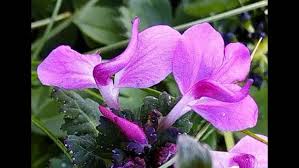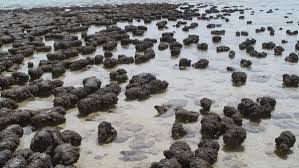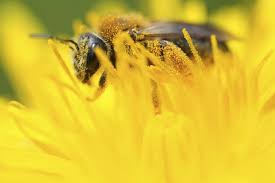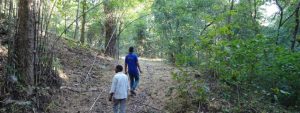Today’s Current Affairs: 29th May 2025 for UPSC IAS exams, State PSC exams, SSC CGL, State SSC, RRB, Railways, Banking Exam & IBPS, etc
Table of Contents
Pedicularis rajeshiana:

Researchers have discovered a new plant species, Pedipularis rajeshiana, in the high-altitude regions of Rohtang Pass in the western Himalayas region.
- It belongs to a group of plants known as “Louseworts”, which are hemiparasitic, meaning they derive some nutrients from other plants while still performing photosynthesis.
- It consists of unique floral characteristics and pollen structure.
- Unlike its close relatives P. porrecta and P. heydei, the new species is smaller in size and has fewer flowers and leaflets.
Nurdles : Found on beaches in Thiruvananthapuram

Tiny plastic pellets (nurdles) found on beaches in Thiruvananthapuram in Kerala following the sinking of the container vessel MSC ELSA3.
- Nurdles are small pre-formed masses of moulding material that have relatively uniform dimensions within a specific batch. These pellets are utilised as raw material in moulding and extrusion operations.
- When in the form of microplastics, these pellets are commonly referred to as ‘nurdles’ and serve as the foundational material for manufacturing a wide range of plastic products.
- They are classified as primary microplastics, these pellets and are between 1 mm to 5 mm in diameter. They constitute a major component in the global plastic chain.
- Microplastic nurdles are mainly composed of polyethene, polypropylene, polystyrene, and polyvinyl chloride.
- These pellets are melted and moulded into various products, including packaging, water bottles, toys, and textiles.
- These pellets remain a dangerous pollutant.
- Their short- and long-term impacts include habitat contamination and their breaking up into micro and nano plastics and entering the food chain.
- They could have serious implications for the marine and coastal ecosystems and humans.
Stromatolites : In News

A large stromatolites — dating back to 600 million years unearthed in the pine-clad ridges of Chambaghat in Solan district of Himachal Pradesh.
- Stromatolites are organo-sedimentary structures formed from the entrapment of calcium carbonate precipitates by algae and cyanobacteria.
- They are bio sedimentary structures produced in shallow marine seas.
- These structures are usually characterized by thin, alternating light and dark layersthat may be flat, hummocky, or dome-shaped.
- Stromatolites were common in Precambrian time(i.e., more than 542 million years ago).
- Most stromatolites are marine, but some forms from Proterozoic strata more than 2 ½ billion years old are interpreted as inhabiting intertidal areas and freshwater ponds and lakes.
- Living stromatolites are found in only a few salty lagoons or bays on Earth.
- The stromatolites at Chambaghat lie within the Krol Group of sedimentary rocks, comprising limestone, shale, and sandstone, formed in a shallow marine environment of what was once the Tethys Sea.
- This region was once part of Gondwana, the southern supercontinent that included India, South America, Africa, and others.
- The Indian plate’s northward drift and collision with Eurasia lifted marine sediments, including stromatolites, thousands of meters skyward.
Stingless Bees: New Study

A new study has shown that stingless bees, which produce a high-value honey with a distinct flavour, can increase the yield and quality of crops.
- A stingless bee is a bee that appears very similar to a honeybee, but is incapable of stinging.
- Approximately 550 species of stingless bees are found within several genera that are members of the Meliponini tribe.
- They are also related to bumblebees and carpenter bees.
- Common genera of stingless bees: Austroplebeia, Melipona, and Tetragonula
- They do possess stingers, but they are too small to be useful in defense. Instead of stinging, stingless bees use their mandibles to bite their attackers.
- Stingless bees can be used for pollination without fear of being stung. They are known for their popular medicinal honey and pollination potential, which paves the way for the formulation of crop pollination calendars to benefit all stakeholders.
- Distribution: Africa, Australia, Southeast Asia, and parts of the Americas are the main areas where the stingless bee is found.
- In India, these bees are reported primarily from the northeastern, eastern, and southern Indian States. In the northeast, these bees are reared traditionally in homestead apiaries.
Seven Summits Challenge:

Hyderabad teenager Vishwanath Karthikey Padakanti recently became the youngest Indian and the second youngest person in the world to complete the legendary 7 Summits challenge.
- The ‘Seven Summits‘ is a challenge first proposed and then completed by Richard Bass in 1985.
- It consists of climbing to the highest point on each of the seven continents, including
- Kilimanjaro: Africa (5,892 m)
- Elbrus: Europe (5,642 m)
- Aconcagua: South America (6,962 m)
- Denali: North America (6,194 m)
- Kosciuszko: Australia (2,228 m) or Puncak Jaya/Carstensz Pyramid: Oceania (4,884 m)
- Mount Vinson: Antarctica (4,892 m)
- Mount Everest: Asia (8,848 m)
- The Seven Summits challenge has two options – the ‘Bass’ list or the ‘Messner’ list.
- The difference between the two lists is that one includes the highest peak in Australia (Kosciuszko), while the other includes the highest peak in Oceania/Australasia instead (Puncak Jaya in Indonesia), respectively.
- Most will attempt the Bass list, while others will then push on to complete the Messner list too.
India Crypto Policy:

A Trump-linked US firm, World Liberty Financial Inc (WLFI), has signed an MoU with Pakistan’s Crypto Council to develop a crypto-based financial system, prompting geopolitical and security concerns for India.
India Crypto Policy:
- Pakistan’s Crypto Pact with WLFI:
- MoU Signed: Pakistan’s newly-formed Crypto Council and WLFI have agreed to introduce stablecoins, monetize rare earth assets, and position Pakistan as a regional crypto hub.
- High-Level Support: Endorsed by PM Shehbaz Sharif and Army Chief Asim Munir, the deal includes use of blockchain for financial inclusion and trade.
- Diaspora Link: Pakistan is leveraging its US-based diaspora to connect with Trump’s team and global crypto investors.
National Academy of Medical Sciences:

One of the critical gaps in cancer care in India is the lack of adequate diagnostic services, finds the latest report by the National Academy of Medical Sciences (NAMS).
- National Academy of Medical Sciences (NAMS) is a unique institution functioning as an apex body with the objective to foster and utilize academic excellence as its resource to meet medical and social goals.
- It was registered as the ‘Indian Academy of Medical Sciences’ on 21st April, 1961, under Societies Registration Act XXI of 1860.
- It was renamed NAMS on 16th November, 1976.
- The academy has been recognised by the Government of India as a nodal agency for continuing education for medical and allied health professionals.
- It also advises the Government of India in matters of National Health Policy and Planning.
- NAMS Task Force Report on Breast Cancer in India:
- India is recording nearly 200,000 new cancer cases each year.
- Sixty percent of the global population resides in Asia, which accounts for 50% of cancer cases and 58% of cancer-related deaths.
- India ranks third in accounting for cancer cases, following China and the United States of America.
Churdhar Wildlife Sanctuary:

The forest department of Himachal Pradesh recently put on hold its order imposing user charge on visitors to the Churdhar Wildlife Sanctuary in Sirmaur district.
- Churdhar Wildlife Sanctuary is located in the Sirmour district of Himachal Pradesh.
- It is situated in the Shivalik range of the Himalayas.
- Established in 1985, this sanctuary spans 56 sq.km. and encircles the majestic Churdhar Peak, also known as Choordhar.
- Churdhar peak is the highest peak in the outer Himalayas.
- From the top of the peak, visitors can relish the view of wild Gangetic plains and the Satluj River on its south and Badrinath (a well-known Hindu pilgrimage) towards its north.
- A small temple dedicated to Lord Shiva sits atop the peak, adding spiritual significance to the sanctuary.
- It is quite renowned for being a habitat of herbal medicine trees and plants.
- Wild Himalayan Cherry, Aloe Vera (Dhrit Kumari), and Amaranthus spinosus (Chulai) are some of the best aromatic plants which can be found here, and these herbs possess amazing medicinal properties.
- The main trees in the sanctuary are oak and deodar.
- The sanctuary is home to various species, including musk deer, black bears, monals (Himalayan pheasants), and leopards.
Ghaggar River : two teenagers lost their lives after drowning

Two teenagers lost their lives after drowning in the Ghaggar River near Panchkula.
- The Ghaggar River is an intermittent river that flows in India and Pakistan.
- The river flows only during the monsoon
- It rises from the Shivalik Range of northwestern Himachal Pradesh.
- After passing through the Ambala and Hissar districts of Haryana, it disappears into the Thar Desert in Rajasthan.
- This seasonal river feeds two irrigation canals that extend into Rajasthan.
- The Hakra, which flows in Pakistan, is the continuation of the Ghaggar River in India, and they are together called the Ghaggar-Hakra River.
India’s First Gene-Edited Sheep:
Researchers from Kashmir have successfully developed India’s first gene-edited sheep using CRISPR-Cas9 technology, under a project funded by the ICAR. They edited the myostatin gene in a local Merino lamb, increasing muscle mass by 30%, similar to European Texel sheep. It contains no foreign DNA, making it non-transgenic.Gene Editing (or Genome Editing) is a biotechnology that enables the precise modification of an organism’s genetic material (DNA or RNA). It allows scientists to add, delete, or alter specific gene sequences within the genome using specialised tools.
Viksit Krishi Sankalp Abhiyan:
The Viksit Krishi Sankalp Abhiyan is a nationwide campaign launched to modernize Indian agriculture through scientific outreach, sustainable practices, and farmer empowerment.Viksit Krishi Sankalp Abhiyan is conducted biannually before the Kharif and Rabi sowing seasons to provide timely field-level guidance on improving crop production, soil health, and resource management.
It aims to cover over 65,000 villages across 723 districts and is expected to directly engage more than 1.3 crore farmers, fostering the adoption of scientific farming practices and promoting sustainable agricultural growth. It aligns with the vision of making India the “Food Basket of the World” through science-backed, climate-resilient, and farmer-centric agriculture.
Sugar Boards:
To combat the rising health risks associated with excessive sugar consumption among school children, the Central Board of Secondary Education (CBSE) has mandated the establishment of ‘sugar boards’ in over 24,000 affiliated schools across India. ‘Sugar boards’ visually display the sugar content in common beverages and snacks, educating children about the health risks of high sugar intake using simple, relatable comparisons like teaspoons of sugar.The National Commission for Protection of Child Rights (NCPCR) has urged all schools, including state boards, to implement sugar boards, highlighting a significant increase in Type-2 diabetes. Studies show Indian children consume sugar amounts (13-15% of daily calories) far exceeding the recommended 5% limit, increasing their risk of lifestyle diseases. The Food Standards and Safety Authority of India (FSSAI) is yet to finalize High Fat, Salt, and Sugar (HFSS) standards for school meals and front-of-pack labelling. India follows World Health Organization (WHO) guidelines recommending adults and children limit free sugar intake to under 10% of daily energy.
World Dugong Day : 28th May
Every year, May 28th is celebrated as World Dugong Day.Dugongs (Dugong dugon) are the only herbivorous mammals found in India’s marine ecosystems.It is known as the sea cow, but resembles a cross between a seal and a whale, and is distributed through the Indo-Pacific region.They are found along the Indian coastline, primarily inhabiting warm waters around the Andaman and Nicobar Islands, the Gulf of Mannar, Palk Bay, and the Gulf of Kutch. The dugong is a long-lived species, able to live up to 70 years.
Ker Sangri : Received a Geographical Indication tag
Rajasthan’s famous dish Ker Sangri has received a Geographical Indication tag.It is a Rajasthani delicacy made using sangri pods sourced from hardy khejri trees and Ker berries that grow on Ker trees. Both these ingredients are native to the arid regions of the Thar Desert.Preparing Ker Sangri is a careful and slow process. The Ker berries taste bitter when raw but become delicious after being soaked, boiled, and cooked with Sangri, curd, red chillies, and spices. The final dish is tangy, spicy and full of earthy flavour. Ker Sangri is not just tasty but also healthy. It is high in fibre, low in fat and rich in nutrients. People in Rajasthan usually eat it with bajra roti and ghee, making it a filling and balanced meal.




